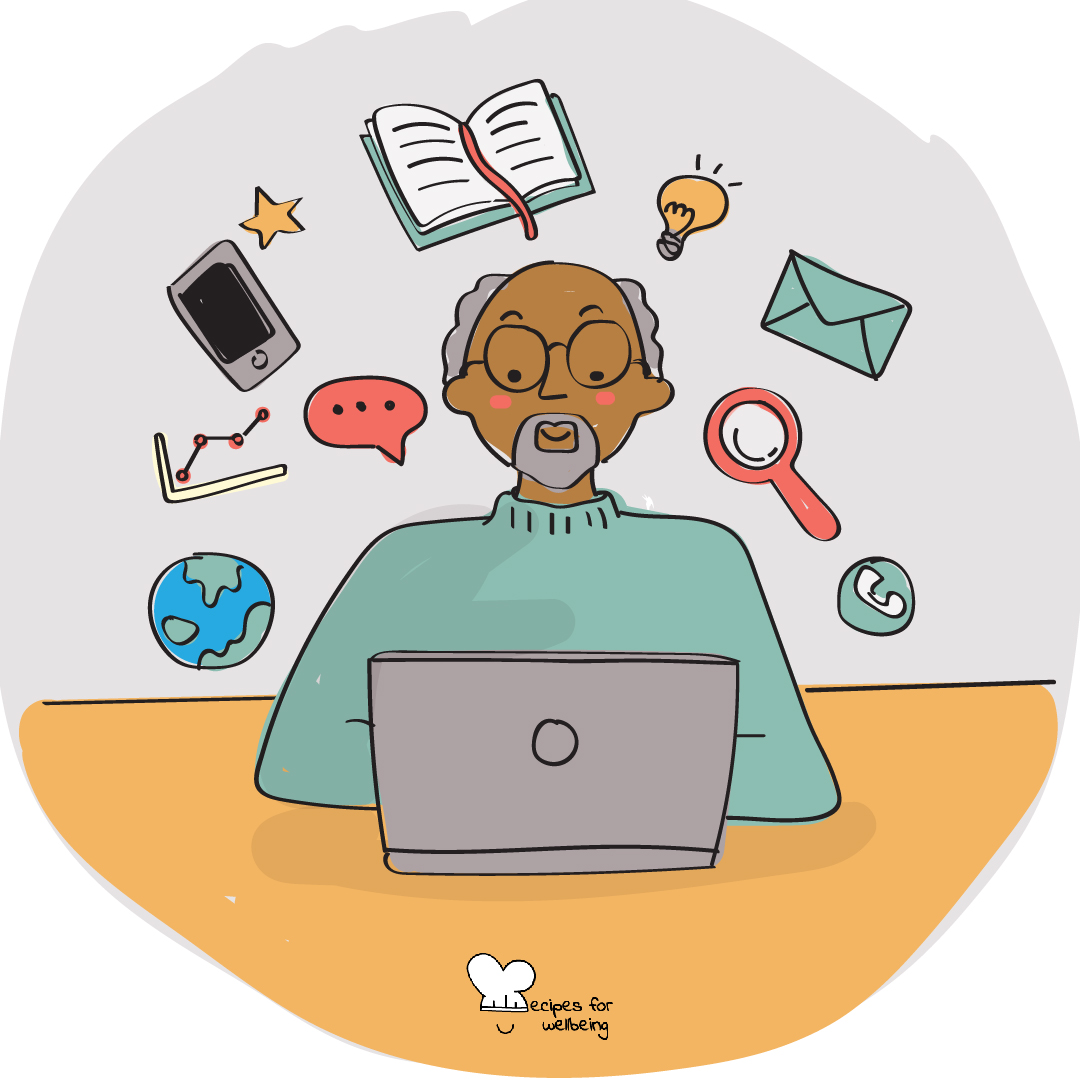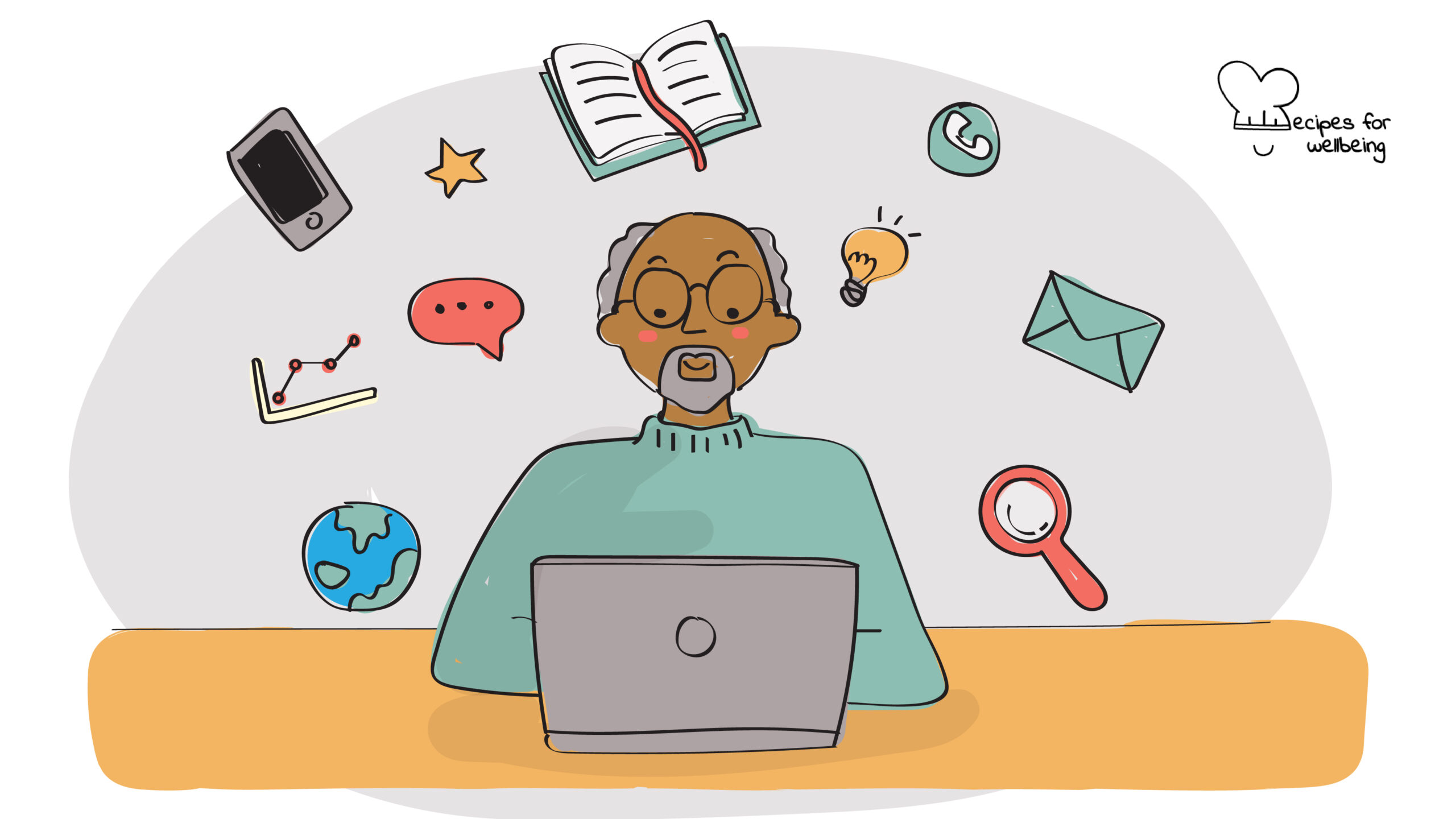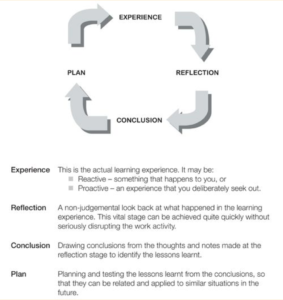
Learning how to learn
Learning is both a process and a continuous state of mind, which transcends all traditional organisational boundaries and structures, and has become a central feature of the way we live. ―Eric Parsloe and Melville Leedham
👥 Serves: 1 person, 11-25 people, 2-10 people, 26-40 people, 41+ people
🎚 Difficulty: Medium
⏳ Total time: 61-120 minutes
🥣 Ingredients: Your team, “Coaching and Mentoring: Practical Conversations to Improve Learning” book by Eric Parsloe (if you’re curious to find out more about it!)
🤓 Wholebeing Domains: Community, Liberatory Learning
💪 Wholebeing Skills: Accountability, Autonomy, Collaboration, Diversity, Equity, Feedback, Flourishing, Liberation, Self-directed learning

Learning how to learn
📝 Description
A reflective exercise to turn your organisation into a learning organisation.
We live in a world of global information and technology-driven organisations. A huge amount of information is transferred every second. The success of our work as changemakers also depends on our ability to relate and learn from this information so that our organisations can stay lean and agile in these times of change. We should aspire for our organisations to become a “learning organisation”, which “harnesses the full brain power, knowledge and experience available to it, in order to evolve continually for the benefit of all its stakeholders.” (The Power of Learning, Mayo and Lank) Our stakeholders are society and the planet itself, of course!
In order to become a learning organisation that values personal mastery, team-learning, shared vision, systems thinking, etc. we must first raise self-awareness of how each of us learns. The following quick reflection helps you and your team identify what kind of learner you are, so that you can (a) adapt your work to optimise your learning; (b) improve your team-work taking into consideration other people’s learning styles. Improving your own learning experience as well as your team’s will boost your individual and collective wellbeing.
The following activity has been taken from Eric Parsloe and Melville Leedham’s book Coaching and Mentoring: Practical Conversations to Improve Learning. The book examines how to create conversations which encourage personal development; exploring the ways in which we can interact to help support and improve performance.
👣 Steps
Step 1 – Understand your approach to learning (15’)
Take a few minutes to reflect on the following three questions:
- How do you perceive information most easily: do you learn best by seeing, hearing, moving or touching?
- How do you organise and process the information you receive: are you predominantly left brain, right brain, analytical or global?
- What conditions are necessary to help you take in and store the information you are learning: are they emotional, social, physical and environmental factors?
Step 2 – Explore your multiple intelligences (15’)
In order for deep learning to take place, it is preferable for people to use several intelligences working together and supporting each other. Look at the three main intelligences and consider how much they affect your learning experience:
- IQ (Intelligence Quotient) – focuses on the linear, logical and rational.
- EQ (Emotional Intelligence) – focuses on our self-awareness and management of self in relation to others and the environment.
- SQ (Spiritual Intelligence) – focuses on our searches for meaning, integration and authenticity.
Step 3 – Understand where you are in the learning cycle (15’)
Take a look at the image of the learning cycle based on Kolb’s cycle* and see where you may fit in the cycle. If you can, think of a few situations that help you identify whether you are more of an activist, reflector, theorist, or pragmatist.

- Activists (experience)
- Activists are open-minded rather than sceptical. This tends to make them enthusiastic about everything new.
- Their philosophy is “I’ll try anything once” – they tend to act first and consider the consequences later.
- They fill their days with activity and tackle problems by brainstorming.
- Reflectors (reflection)
- Reflectors like to stand back and consider experiences, observing them from many different perspectives and listening to others before making their own comment.
- The thorough collection and analysis of data about experiences and events is what counts, so they tend to postpone reaching definitive conclusions for as long as possible.
- When they act, it is as part of a larger picture that includes the past as well as the present and others’ observations as well as their own.
- Theorists (conclusion)
- Theorists adapt and integrate observations into complex but logically sound theories, thinking through problems in a step-by-step way.
- They tend to be perfectionists who are uncomfortable unless things are tidy and fit into a rational scheme.
- They are keen on basic assumptions, principles, theories, models and systems thinking.
- Pragmatists (plan)
- Pragmatists are keen on trying out theories, ideas and techniques to see if they work in practice.
- They positively search out new ideas and take the first opportunity to experiment.
- They like to get on with things and act quickly and confidently on ideas, being impatient with extensive discussion.
The styles above have been identified by Peter Honey and Alan Mumford. For more information on this, please check out their book Using Your Learning Styles.
*The Mellander Learning Cycle (Lucas, 2001) further develops the Kolb Learning Cycle and argues that learning is built up from an iteration of:
- Motivation: being mentally prepared and receptive.
- Information: having facts and data changed into information.
- Processing: having information converted into experience and insight.
- Conclusion: having the moment of discovery as experience and insight are converted into knowledge and wisdom.
- Application: having knowledge converted into skills and attitudes.
- Feedback: experiencing further reflection and refinement.
Step 4 – Understand the situations where you learn best (15’)
Once you have identified your preferred learning style, consider the situations and activists where you are likely to learn best:
- Activists
- It is appropriate to “have a go”;
- They can get involved in short activities such as role-plays, and where they are in the limelight;
- They are thrown in at the deep end; and
- There is a lot of excitement and a range of changing tasks to tackle, usually involving people.
- Reflectors
- They can stand back from events and listen and observe;
- They can carry out research or analysis;
- They can decide in their own time, and have the chance to think before acting; and
- They have the opportunity to review what they have learnt.
- Theorists
- They are intellectually stretched, e.g. through being allowed to question assumptions or logic;
- The situation has a structure and clear purpose;
- They can deal with logical, rational argument, which they have time to explore; and
- They are offered interesting concepts, although they might not be immediately relevant.
- Pragmatists
- Use techniques with obvious practical benefits;
- Implement what they have learnt immediately;
- Try out and practice techniques; and
- See an obvious link between the subject matter and a real problem or opportunity at work.
Step 5 – Sharing and brainstorming (30’)
Invite your colleagues to share their preferred learning style(s) and learning opportunities so that everyone becomes aware of the group diversity in terms of learning needs and learning talents. Use this time as well to explore how you can help each member of your team to choose learning opportunities that suit their preferred learning style(s), harness their multiple intelligences, and go through the whole learning cycle.

